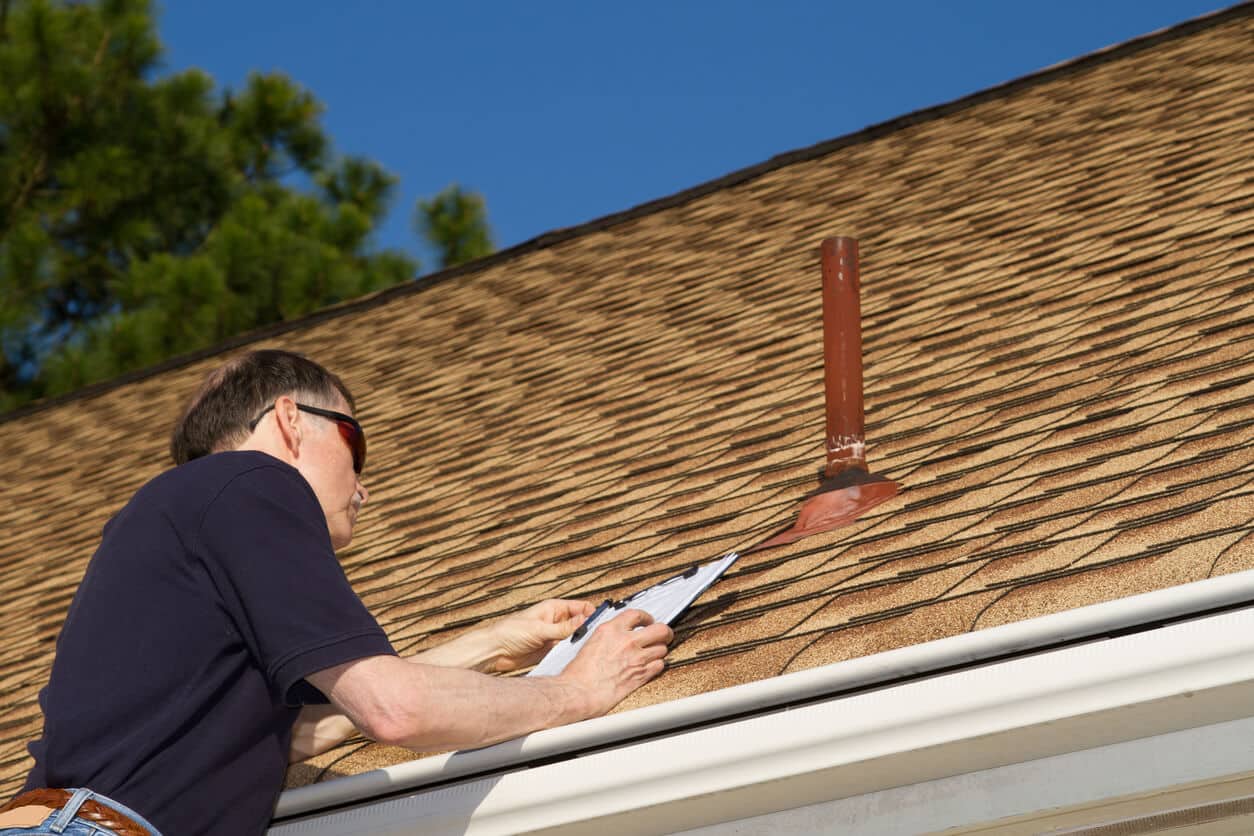
Your roof is one of the most critical components of your home’s structure, yet it’s also one of the most overlooked. Many homeowners don’t realize there’s a problem until a leak stains the ceiling or a storm tears through damaged shingles.
That’s why scheduling a roof inspection, especially with a qualified professional, isn’t just a good idea; it’s a smart financial decision. A timely inspection can uncover small issues before they become expensive repairs, extend the life of your roofing system, and even help with insurance claims in the event of damage.
In this guide, we’ll explore why hiring a roof inspector is worth the investment, what to expect during a roof assessment, and how regular roof checks can protect your home and your wallet.
When to Get a Roof Inspection
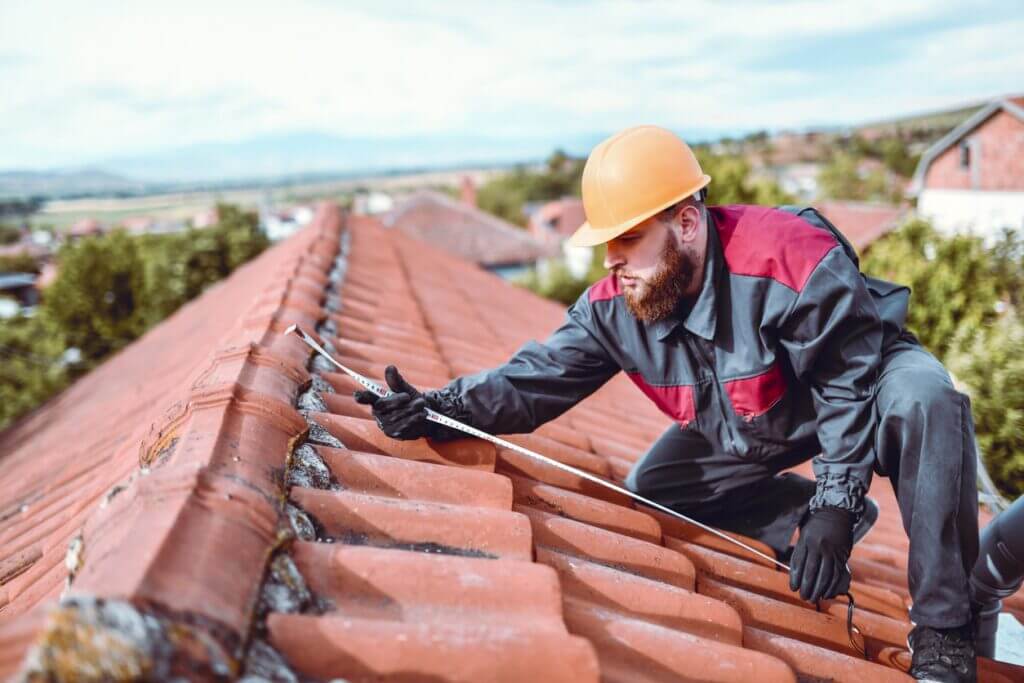
Knowing the right time to schedule a roof inspection can make a major difference in maintaining your home’s integrity and avoiding costly repairs. A proactive approach, rather than a reactive one, allows homeowners to spot and resolve small issues before they escalate.
Below are the most critical times to hire a roofing inspector or schedule a professional roof inspection service.
1. Annual Roof Checks as Part of a Maintenance Plan
Most roofing professionals recommend an annual roof inspection to assess wear and tear, especially as materials age or environmental conditions shift. This is particularly important for homes with asphalt shingles, wood shakes, or older metal roofing, which can deteriorate subtly over time. Here’s why annual roof checks are a great strategy:
- Annual checks help identify early signs of damage, such as minor leaks, granule loss, or small gaps in flashing.
- Early repairs are typically far less expensive than full replacements.
- For commercial or rental properties, annual inspections are often a requirement in maintenance contracts or insurance policies.
2. Roof Inspection After Installation to Confirm Workmanship and Flashing
After investing in a new roof, it’s wise to schedule a roof inspection after installation, ideally with a third-party roof inspector. Even trusted contractors can miss things, and certain installation errors may not become apparent until months later.
A post-installation roofing inspection will verify:
- Proper flashing around chimneys, skylights, and valleys
- Correct nailing patterns and fastener placement
- Secure sealing of underlayment and water barriers
- Proper ventilation and ridge cap installation
This type of inspection helps validate warranty coverage and ensures that your new roof was installed to code.
3. Before Storm Season (Especially in Atlanta’s Humid Spring/Summer)
In regions like Atlanta, where humid spring and summer storms bring heavy rain and wind, preparing your roof ahead of storm season is essential. Scheduling a professional roof inspection before this time helps prevent:
- Flashing failures due to thermal expansion
- Leaks caused by worn or loose shingles
- Water intrusion through weakened seals
This is particularly important for metal roof inspection needs, as panel seams and fasteners must be checked for expansion-related gaps.
4. After Major Weather Events: Hail, Wind, Tree Debris
Storm damage isn’t always visible from the ground. After events like hailstorms, high winds, or fallen branches, a roof damage inspection should be scheduled immediately.
What a roofing inspector typically checks after a storm:
- Dented or punctured shingles
- Loose or missing flashing
- Clogged or broken gutters
- Impact damage from debris
Even if you don’t see clear signs of damage, a formal roof assessment ensures hidden issues don’t compromise your structure over time. You may also need a certified inspection to file an insurance claim.
5. Before Buying or Selling a Home
A home roof inspection is a must for both buyers and sellers. For buyers, it provides peace of mind and prevents unexpected costs after move-in. For sellers, it’s an opportunity to address concerns before listing and improve property value.
Key things a roof inspector evaluates during real estate transactions:
- Age of the roof and remaining life expectancy
- Condition of roofing materials and underlayment
- Adequacy of ventilation and insulation
- Signs of prior repairs or storm damage
What a Professional Roof Inspection Includes
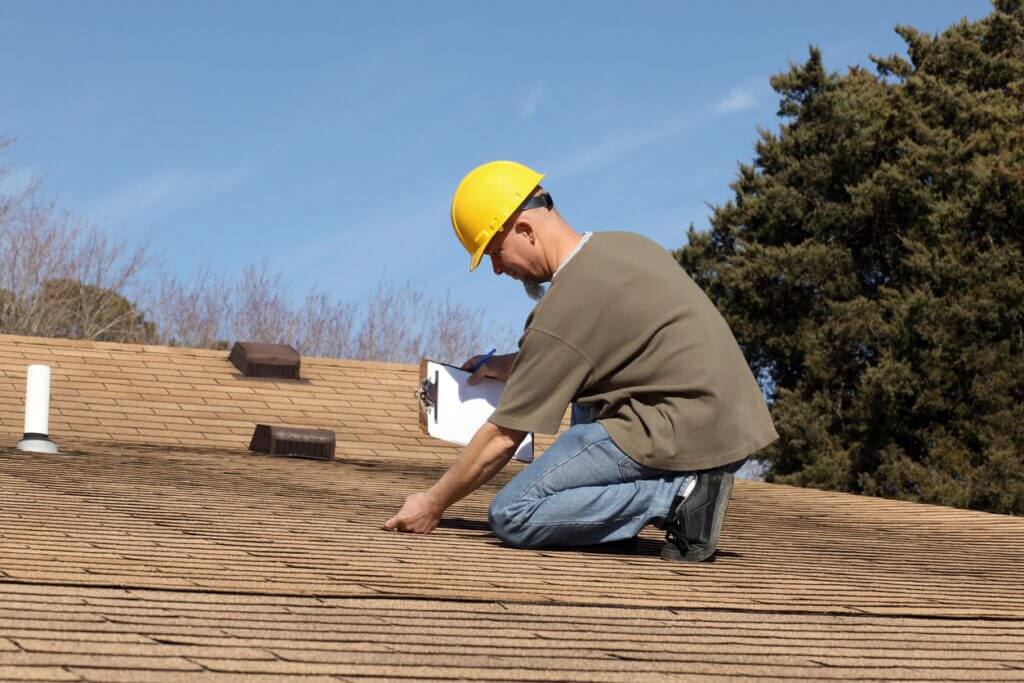
A professional roof inspection goes far beyond a quick visual scan from the ground. Certified roof inspectors use checklists, tools, and hands-on techniques to evaluate every layer of your roofing system, from shingles and flashing to attic airflow and drainage infrastructure.
Let’s take a deeper look at the main components of a comprehensive roofing inspection.
Exterior Roof Checks
The first phase of any roofing inspection focuses on the exterior components, the shingles, flashing, underlayment, and roof deck. This is typically where weather exposure causes the most visible signs of deterioration or damage. Depending on roof pitch and accessibility, inspectors may walk the roof, use drones, or employ telescopic inspection cameras to capture high-resolution images.
Key areas assessed during the exterior check include:
Missing, Cracked, or Curling Shingles
Shingles are your roof’s first line of defense against water intrusion. Over time, weather exposure and aging can cause them to crack, curl at the edges, or detach completely.
- Missing shingles expose the underlayment and decking to moisture.
- Cracked shingles may allow water to seep through small gaps.
- Curling edges can catch wind and increase the risk of shingle blow-off during storms.
These issues are common with asphalt shingles, which tend to degrade faster than tile or metal. Shingle condition also helps indicate the remaining life of the roof.
Exposed Nails or Nail Pops
Nail heads that push up (commonly called “nail pops”) or remain exposed are a common source of leaks. These arise due to:
- Thermal expansion and contraction
- Improper nail placement during installation
- Roof deck movement or warping
A professional roof inspector checks the pattern and integrity of fasteners to ensure proper sealing and minimize long-term risk.
Flashing Damage (Chimneys, Vents, Valleys, Walls)
Flashing protects the most vulnerable transitions on a roof—places where two surfaces meet, such as:
- Chimney bases
- Roof valleys
- Skylights
- Vent pipes
- Sidewalls
Cracked, rusted, or improperly installed roof flashing is a major cause of roof leaks. During inspection, technicians look for lifting edges, missing sealant, corrosion, and water staining. They may also test vulnerable seams for movement or gaps.
Sagging or Soft Decking
Walking across a roof helps reveal structural weaknesses below the surface. A roof inspector will look for:
- Uneven dips or valleys in the roofline
- Soft or spongy areas underfoot (suggesting water damage)
- Sagging near load-bearing walls or eaves
These are often signs of compromised roof decking or underlying rot, which can’t be seen from the ground but signal a need for immediate repair.
Interior Attic Assessment
A comprehensive roof inspection always includes a review of the attic, as it’s the best place to catch water intrusion, mold development, or ventilation problems that aren’t visible from the outside. Conditions in the attic often reflect the long-term performance of the roofing system.
Key things an inspector evaluates include:
Moisture, Mold, and Insulation Issues
Water stains on rafters, mold patches, or damp insulation are red flags. These signs can indicate:
- Active leaks from the roof surface
- Condensation from inadequate ventilation
- Water penetration through flashing or nail holes
If left untreated, moisture can compromise insulation effectiveness, lead to wood rot, and create a favorable environment for mold growth. A roof inspection should note the severity and spread of these issues.
Proper Ventilation
Attic ventilation plays a key role in prolonging the life of your roof and reducing energy costs. A roofing inspector will check for:
- Sufficient intake (soffit) and exhaust (ridge or gable) vents
- Airflow obstructions due to insulation or debris
- Signs of heat build-up, like warped wood or excessive humidity
Inadequate ventilation can cause shingles to blister, moisture to accumulate, and the attic to overheat, leading to premature roof failure.
Drainage and Gutter Evaluation
Effective water drainage protects your entire roofing system and your home’s foundation. During a roofing inspection, the gutter system and roof drainage paths are carefully evaluated for issues such as:
- Clogged or sagging gutters
- Detached downspouts
- Improper slope or pitch of gutter lines
- Accumulation of shingle granules (a sign of aging shingles)
- Water stains or splash marks on fascia boards or siding
Even small drainage issues can lead to water backing up under shingles or seeping into walls and foundations. An inspector may also check for signs of ice damming in colder climates or heavy debris buildup from overhanging trees.
Detailed Reporting and Repair Estimates
Once the roof inspection is complete, the final step is documentation. A professional roof inspection service provides a detailed report that includes:
- Photographic evidence of any issues, often with annotations
- Written descriptions of problem areas and their severity
- Recommendations for repairs or preventative actions
- Cost estimates for necessary fixes or replacements
- Life expectancy estimates based on current roof condition and material
This documentation is valuable whether you’re filing an insurance claim, preparing to sell a home, or simply tracking the long-term performance of your roof. In many cases, this report can also serve as an official record for warranty claims or city permits when pursuing structural updates.
Specialized Types of Roof Inspections
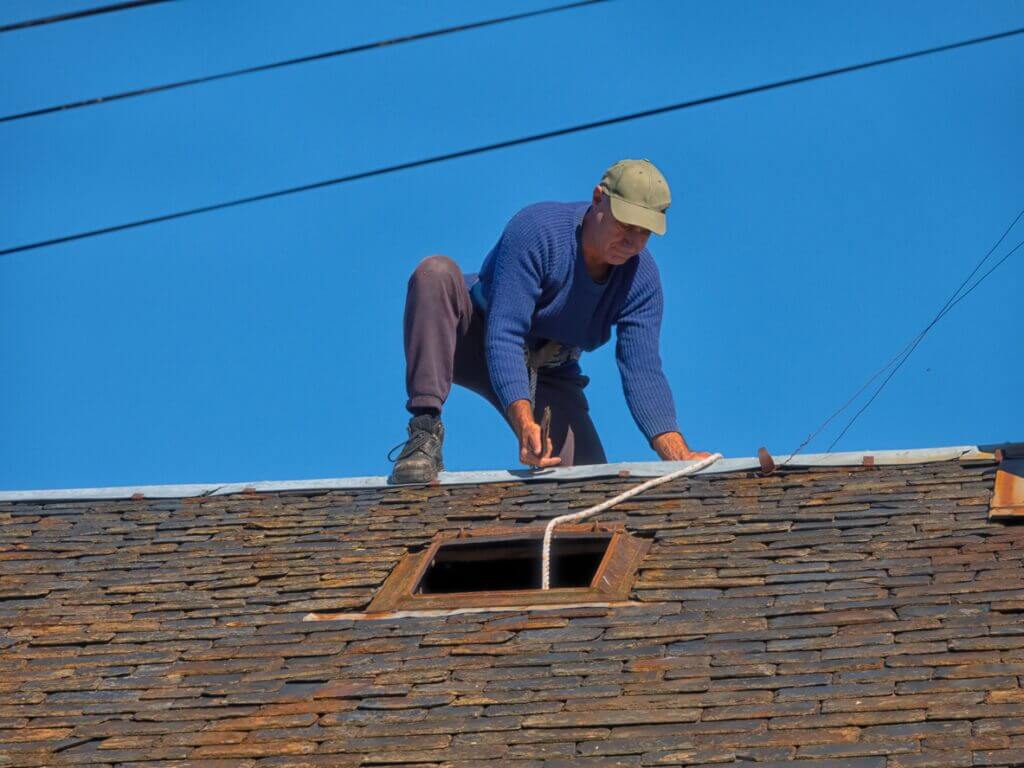
Not all roofing systems are the same, nor are the issues they face. Certain roof types require tailored inspection approaches due to the materials involved, how they’re installed, and how they age or respond to environmental stress.
Whether you own a home with a standing seam metal roof, a flat commercial system, or live in a storm-prone area, it’s important to schedule the right kind of roof inspection for your needs.
Below, we reveal the most common specialized inspections and what each one entails in detail.
Roof Damage Inspection After Storms or Falling Tree Limbs
After a major weather event, like a thunderstorm, tornado, or high-wind front, it’s critical to schedule a roof damage inspection even if your roof looks fine from the ground. Many forms of storm damage are not immediately visible but can lead to serious problems over time if left unchecked.
The following is what inspectors look for after a storm:
Damage Type | Description |
Hail Damage | Small pockmarks or granule loss on shingles that compromise water resistance. In asphalt shingles, hail may leave soft bruises that weaken over time. |
Wind Uplift | High winds can lift shingles, flashing, or metal panels at their seams. The inspector checks for lifted tabs, detached ridge caps, or loose nail heads. |
Impact from Tree Limbs | Falling debris can puncture shingles, dent flashing, or crack tiles. Even small branches can dislodge edge sealants or cause gutter damage. |
Leaks and Moisture Intrusion | Inspectors will look for water staining or wet insulation in the attic and ceilings. |
Storm damage roof assessments are especially important for insurance claims. Many policies require documentation of the inspection within a limited window of the event.
Metal Roof Inspection
Metal roof inspections require a different skill set and inspection protocol than standard shingle systems. Although metal roofs are durable and long-lasting, they still need regular evaluation for specific forms of wear and structural stress.
The following is an overview of common metal roof issues and their causes:
Issue | Potential Cause | Inspection Focus |
Seam Separation | Thermal movement, installation errors | Panel joints, seam clips, panel overlap |
Fastener Wear | Vibration, expansion, and age | Screw tightness, washer condition |
Rust and Corrosion | Coating failure, water pooling | Panel finish, gutter edges, panel edges |
Flat Roof Inspection for Ponding Water and Membrane Integrity
Flat roofs, commonly found on commercial buildings and some modern residential homes, require a different inspection approach due to their low slope and reliance on continuous waterproofing membranes.
Here’s what inspectors look for in flat roofs:
- Ponding Water: If water lingers, it can degrade the membrane, encourage algae or mold growth, and increase the load on the structure. Inspectors will check for low spots where water pools, assess roof slope and drainage slope direction, evaluate scupper and internal drain function.
- Membrane Integrity: Whether TPO, EPDM, PVC, or modified bitumen, roofing membranes must remain fully sealed to resist leaks. Inspectors look for blisters or bubbles under the surface (signs of trapped air or moisture), cracks or splits, especially around seams or edges, and punctures from foot traffic, tools, or rooftop equipment.
- Edge Detailing and Flashing: Since water can seep in from the sides, all perimeter flashings and wall joints must be sealed and secure.
- Roof Penetrations: Vents, pipes, HVAC units, and skylights are common on flat roofs and present multiple leak points. An inspector will examine all sealants, boots, and metal curbs for wear or separation.
Failure to maintain flat roof membranes can lead to structural saturation or interior flooding, particularly in heavy rain.
Roof Inspection vs. Roofing Estimate: What’s the Difference?
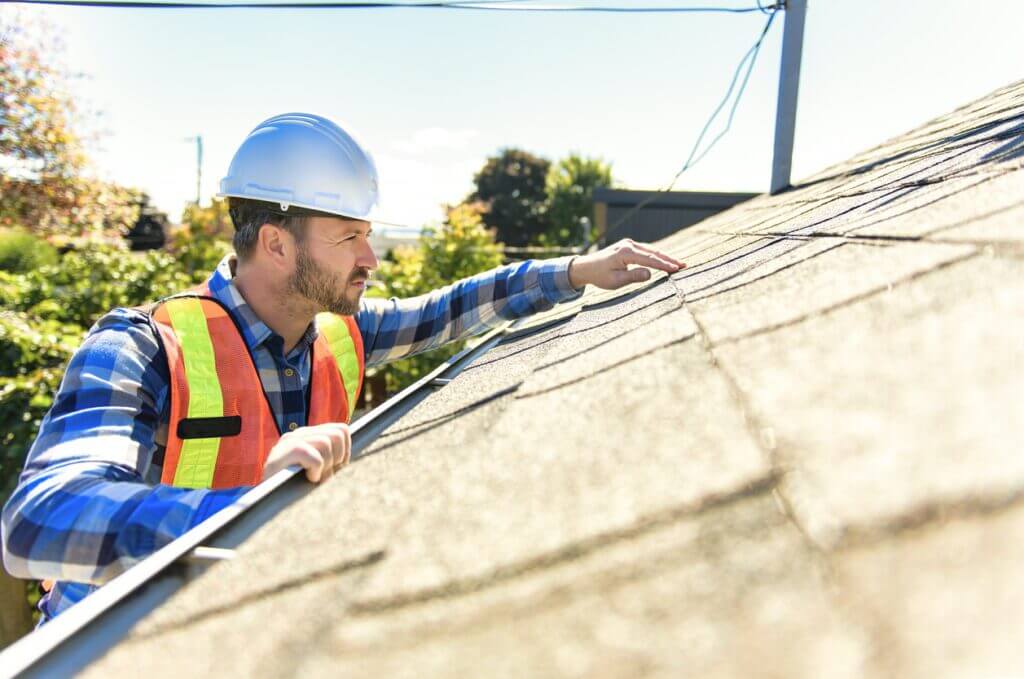
Homeowners often confuse a roof inspection with a roofing estimate, assuming they serve the same purpose. In reality, they are two entirely different services, each valuable in its own right.
Understanding the distinction helps you avoid miscommunication, prevents surprises down the line, and ensures you hire the right roofing professional for the job.
Roof Estimate = Quoting a Known Job
A roofing estimate is a quote for a specific job or service that the customer has already identified. This typically happens when a homeowner knows—or assumes—they need a particular repair or replacement, and they want to understand the cost and scope before committing.
What’s Included in a Roofing Estimate:
- Labor costs for tear-off, installation, or repair
- Materials (e.g., shingles, flashing, underlayment, vents)
- Project timeline from start to finish
- Warranties on workmanship and materials
- Permitting fees if applicable
This is a transactional process. The contractor is quoting you based on visible conditions or a homeowner’s request (e.g., “I want to replace my roof” or “I need to fix a leak above my garage”).
Estimates are usually free but do not involve a thorough roof assessment. There’s no in-depth diagnosis, and hidden problems may be missed unless uncovered during the job itself—which can lead to scope creep and unexpected costs later.
Roof Inspection = A Full Health Check
A roof inspection, on the other hand, is an in-depth, diagnostic service. It involves a certified roof inspector evaluating the entire roofing system—inside and out—to assess condition, identify hidden damage, and recommend action before problems escalate.
Think of a professional roof inspection like a medical check-up. You’re not just treating symptoms; you’re proactively checking for signs of wear, structural weakness, and future risk.
What a Professional Roof Inspection Includes (Recap):
- Visual and physical evaluation of shingles, decking, and flashing
- Attic inspection for ventilation, insulation, and moisture issues
- Gutter and drainage system evaluation
- Photo documentation and written summary of findings
- Unbiased recommendations with no sales pressure
This process helps uncover:
- Small leaks that haven’t surfaced yet
- Structural sagging or nail pops
- Flashing failures around chimneys or skylights
- Poor attic ventilation contributing to mold or heat buildup
Unlike an estimate, an inspection is not tied to a sale. Many homeowners request roof inspections annually, after storms, or before buying/selling a home.
Why Reputable Contractors (Like Mr. Roofer) Clearly Separate the Two for Transparency
Reputable roofing companies like Mr. Roofer Atlanta differentiate between a roof inspection and a roof estimate to maintain clarity, integrity, and trust. Blurring the two can create confusion, lead to misdiagnosed problems, or even cause homeowners to unknowingly skip necessary repairs.
Here’s why keeping them separate is a best practice:
1. Inspections Are Objective, Not Sales-Driven
An inspection should be diagnostic—not a sales pitch. By offering inspections as a standalone service, contractors can give honest feedback without pressure to sell repairs. This builds trust and gives homeowners unbiased insight.
2. Estimates Are Job-Specific
Estimates are based on known tasks. If a customer only requests a gutter replacement, the contractor provides a quote for just that—without assessing the roof deck, flashing, or ventilation. Without a prior roofing inspection, this limits the contractor’s scope of visibility.
3. Legal and Insurance Benefits
A professional roof inspection, especially one documented with photos and detailed notes, is often required by insurance companies, warranty claims, or real estate transactions. Estimates do not carry that legal or diagnostic weight.
4. Clearer Cost Expectations for the Homeowner
By separating the two, the homeowner gets clarity:
- Inspection = “What condition is my roof in?”
- Estimate = “How much will this specific job cost?”
This transparency reduces the risk of miscommunication, scope changes, or pricing disputes later.
The Long-Term Value of Regular Roof Inspections
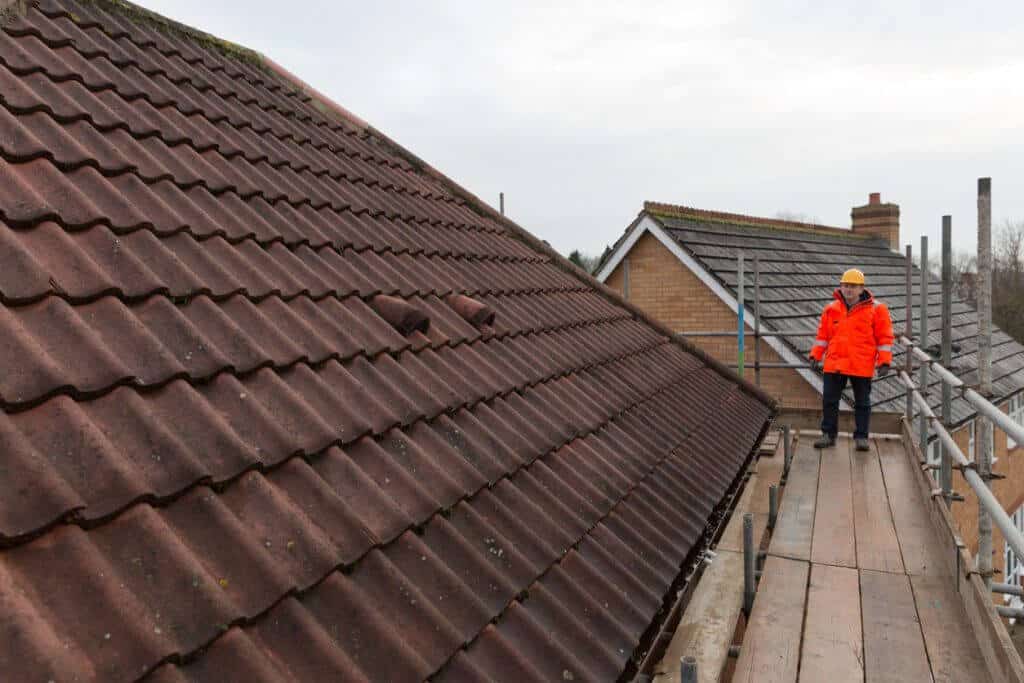
Scheduling a professional roof inspection on a regular basis isn’t just about preventing leaks, it’s a smart, long-term strategy for protecting your property, your finances, and your peace of mind.
Here’s why:
Protects Home Value (Especially in Luxury Markets Like Buckhead, Milton, Sandy Springs)
In upscale real estate markets, buyers expect move-in-ready homes with no hidden issues. Regular roof inspections provide documented proof of maintenance, which can boost resale value and speed up closing processes. A well-maintained roof signals quality and diligence, both of which appeal to discerning buyers.
Reduces Risk of Interior Water Damage, Mold, and Emergency Roof Failures
Unchecked leaks, failing flashing, or clogged gutters can lead to costly water intrusion. Over time, this results in mold growth, wood rot, and damage to ceilings, drywall, and flooring. Routine roof checks catch these issues early—before they escalate into emergencies or insurance claims.
Supports Smart Financial Planning for Upcoming Roof Work
A yearly roofing inspection allows homeowners to forecast when repair or replacement might be needed. Knowing that your roof has 3-5 years of life left helps you plan your budget, compare quotes, and avoid rushed decisions during a crisis.
Improved Insurance Claim Support With Dated Documentation
Should your home suffer storm damage, a previously documented roof inspection can make the claims process smoother and more successful. Insurance adjusters are more likely to approve repairs or replacements when presented with clear, time-stamped proof of pre-damage condition.
In short, regular roof inspections are an investment in your home’s longevity and marketability. They keep you one step ahead of costly surprises, and provide the documentation, peace of mind, and strategic insight every homeowner needs.
Conclusion: Protect Your Home With the Power of a Professional Roof Inspection
Your roof is your home’s first line of defense, and regular roof inspections are the key to keeping it that way. Whether you’re safeguarding your property from storm damage, maintaining your investment in high-value markets, or simply planning ahead for future repairs, a thorough roof assessment provides the clarity and confidence every homeowner needs.
From identifying early signs of damage to supporting insurance claims and ensuring proper drainage, ventilation, and flashing, a professional roof inspection service delivers long-term value far beyond what meets the eye. It’s not just about fixing what’s broken, it’s about preventing issues before they start.
Ready to protect your home with confidence? Trust the experienced team at Mr. Roofer Atlanta for detailed, honest, and dependable roof inspections across the metro area. Whether you need a post-storm evaluation, annual maintenance, or a second opinion before a major project, Mr. Roofer is here to help.
Schedule your professional roof inspection today with Mr. Roofer Atlanta—and get ahead of roofing problems before they cost you thousands.
